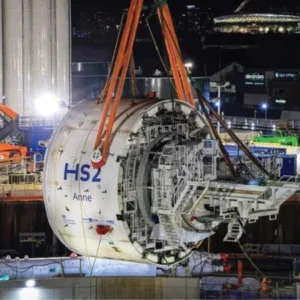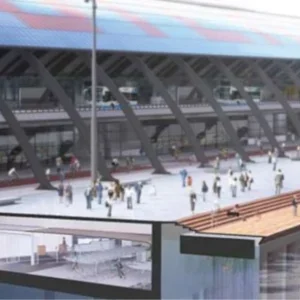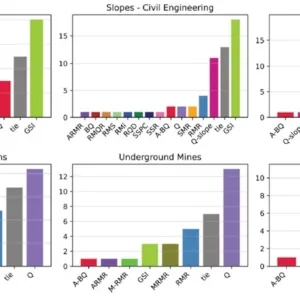THE WORLD BANK released a report in 2010 to help the Peruvian government in assessing the potential role of hydropower in the energy sector and the measures that could be taken to encourage its continued development as appropriate. Hydropower has been the major source of electricity in Peru, traditionally supplying more than 80 per cent of requirements, and serving as a source of independent generation for major mines and industries.
However, the report explains, in the early 1990s efforts turned to natural gas and the government began providing incentives for its use in power generation. "This resulted in a virtual moratorium on hydropower development as a result of the very low price of natural gas (below economic cost)."
Over the next decade, with the development of export markets for gas and increased attention to the impacts of climate change, the Government returned its attention to hydropower. The Peruvian government completed its National Energy Plan 2014-2025, which calls for electricity to comprise 60 per cent renewable sources by 2025, with 54 per cent coming from hydropower.
The International Hydropower Association called Peru a regional leader in small hydropower projects. In its 2015 Hydropower Status report it estimates Peru has hydropower potential of at least 70GW, "of which only 3.8GW have been tapped so far." In 2014 Peru added 199MW, ranking it among the top 20 countries installing capacity at number 17, (Canada comes in at number three and the US at number 16).
The market potential for hydro construction in Peru has captivated the likes of Odebrecht, whose subsidiary Empresa de Generación Huallaga (EGH) is developing the 462MW Chaglla power plant, which will be country’s third biggest hydropower project upon opening, scheduled for this year.
Norwegian company Statkraft opened its ninth hydropower plant in Peru, the Cheves Hydropower Project, this autumn. "The opening of Cheves consolidates Statkraft’s position among the largest power producers in Peru," says Statkraft’s executive vice president of International Hydropower, Asbjørn Grundt. "It also underlines our ambition to further strengthen our position as a leading international provider of pure energy. Our efforts in South-America play a very important role in this strategy,"
CHAGLLA’S BYPASS
Located between the districts of Chaglla and Chinchao, some 420m from Lima, the Chaglla Hydroelectric Power Plant has 406MW of installed capacity. The plant is the result of an investment made by Odebrecht Energia of USD 1.bn, with support from the Brazilian Development Bank, and the Inter-American Development Bank among others.
Water from a 199m-high dam with a 273m-long crown will be diverted through a 14.7km intake tunnel to the main powerhouse, which will be equipped with two Alstom power transformers with a nominal output of 225MW. The project will also feature a small power house, including a power transformer with an output of 6MW. "Chaglla will be one of the largest hydroelectrical power plants in Peru and it will represent almost 8 per cent of the current consumption of energy of this country," says Erlon Arfelli, manager of Odebrecht Energia in Peru.
Construction started in May 2011 and Sandvik supplied six DT820-SC tunnelling jumbos for the excavation at Chaglla. Underground construction includes a spillway composed of three tunnels for a total length of 2,838m, 14.5m x 12.6m-high. The 14.7.km-long intake tunnel is horseshoe-shaped with a 7.6m diameter.
One of the most important works in the project is bypassing the Huallaga River, which contractors performed through a trunk tunnel of 12.5m diameter, 1,125m long. Odebrecht says the work concluded nine months prior to the scheduled date. The bypass tunnel is significant step for the project, allowing the dam to be constructed in the former riverbed.
Sandvik says the type of rock encountered made rapid progress difficult. Drill and blast excavation has been carried out mainly in grade 3-5 rock hardness, with grades 4-5 predominating. Crews were working two shifts per day and while typical advance rates depended on the rock encountered, they could be as high as 6-8m/day, with 3-4m/day the average. Rock support varied according to the geology with steel arches and mesh on class 4 and 5 rocks, while rock bolts and mesh were used on class 2 and 3 rocks. Odebrecht says EGH began filling the reservoir on September 1, 2015, and expects the process to last between 45 and 60 days. The project’s lenders appointed Mott MacDonald in 2013 as independent engineer to monitor construction.
TUNNELS FOR CHEVES
Statkraft developed the Cheves Hydropower Project through its subsidiary Empresa de Generacion Electric Cheves S.A., which started commercial operations in late August 2015. Located 130km north of Lima, on the Huaura River, the power station consists of two aggregates with a total installed capacity of 172MW.
As reported previously in this magazine, underground works dominated the infrastructure of the Cheves project, having a total of approximately 18km of tunnels (see "Crafting Cheves," p34, Tunnels and Tunnelling International May 2012).
Among the tunnels there is a 2,580m-long, horseshoeshaped cross section transfer conduit; and a 9,693m-long headrace tunnel, which has an upper section at a grade of two per cent and a lower section at 14 per cent grade. These sections are 5.5m wide and the upper and lower sections have heights of 4.5m and 6m respectively. Downstream, the flow is discharged into the 3,312m long tailrace tunnel.
The project’s designer is Norwegian consultant Norconsult. The main contractor and manufacturer is Constructora Cheves, a JV led by Hochtief (65 per cent) with Salfa (25 per cent) and Ingeniero Civiles y Contratistas Generales (ICCG) (10 per cent) to perform the civil works.
Sandvik also supplied machines for this hydropower project, with at least seven DT 720 twin boom jumbos, and a DC 301 rubber-tyred bench drill. In June 2015, Ontario-based ASI Marine conducted a remotely operated vehicle (ROV) underwater inspection of one of the tunnels on the Cheves project, saying the work broke the company’s record for the deepest flooded tunnel inspection at 570m water depth.
The tunnel inspected is approximately 9.8km in length, with a 35m2 area horseshoe profile. The purpose of the inspection was to collect data inside the newly-constructed tunnel for general assessment of rock stress incidences. The Mohican ROV collected full coverage data at the headworks and downstream to the powerhouse. ASI says, "this data was required for the client to undertake an engineering structural assessment of the tunnel and detect significant anomalies; such as deformations, major cracks, rubble, partial collapses, and rock accumulations."
The project met its structural assessment deadline in summer 2015, and the plant officially opened on September 15, 2015.






